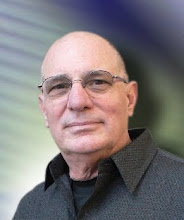- (NKJV) 29 There are three things which are majestic in pace, Yes, four which are stately in walk: 30 A lion, which is mighty among beasts and does not turn away from any; 31 a greyhound, [Exact identity unknown] a male goat also, and a king whose troops are with him. [A Jewish tradition reads a king against whom there is no uprising.]
There is an old, and well-worn story of a man years ago walking who approached a laborer who was laying bricks and asked him, “What are you doing?” The laborer somewhat sarcastically shot back, “Can’t you see I’m laying bricks?”
Walking further, the man came across another bricklayer and asked, “What are you doing?” The workman looked up with quiet confidence and replied, “I’m building a cathedral.”
Both were physically doing the same thing. But the first was occupied with only his lot in life and his task. The second was walking a path toward an ultimate goal.
Agur, the author of this chapter of Proverbs, had many interesting comments about life, most of which were based on his keen observation of the animal kingdom. Why these three and what could they mean to me?
Agur began with the stately lion – and those of us raised in the church, know the symbol of Christ being the Lion of the tribe of Judah. But there’s more. The lion walks with great majesty, very slowly, step by step, the left foot first; shaking its shoulders as it goes, and this without fear; it does not go out of its way for any creature it meets with; it doesn’t hasten its pace when pursued, nor show the lest sign of fear; nor does it turn its back to any. It moves ahead toward its goal with confidence in its stride. It is interesting to note that Aristotle, Pliny, Homer, and Virgil have all written about the lion and each observed what Agur in book of Proverbs observed. Many of the church fathers, although martyred, were lions of the church for they were steadfast in their eternal duty and did not loose focus even under the horrific circumstances of loosing limbs and ultimately their life.
The second metaphor is open to interpretation: some say a rooster; others a greyhound or other hunting dog; still others say warhorse. The latter has strong roots in the Hebrew understanding and fits the imagery happening here. You cannot ride a lion – you observe them, and not normally tame them: you can ride a horse once tamed. In Job 39:19 God asks Job, “Do you give the horse his strength or clothe his neck with a flowing mane?” The majesty of a beautiful horse alone is breath taking: with a majestic rider, even more so. That rider has the ability to control the tamed animal, move with it when riding, and does not fight for dominance with the horse – but works with it, knowing it tendencies and managing its strength.
Our society has lost the imagery of the billy-goat or he goat which, with its long beard, walks very gravely, and in a stately manner, before the flock (and the Septuagint adds "going before the flock"). This goat has earned the right to lead the flock. There is no dispute now: that was settled in the pasture. The flock follows for it has learned that this one goat can lead.
Each of these animals picture the leader – called King in this culture – who, like leaders today, had to hold the troops together. One scholar renders this passage, “and a king with whom the people is” recognizing that powerful symbiotic relationship between leaders and followers. The majestic business leader has the ability to keep all within the company focused toward a common goal and proves him/herself open to the strengths of others to help in realizing that goal.
Some lead like the lion – think of Moses – alone, but focused – constantly moving forward. Others lead like Joshua, riding upon the leadership of Moses, and when he assumed power, became like the lion his mentor was. Others lead like Caleb, Joshua’s right hand man. Proven a leader in battle time and again, his troops followed until the end of his days. None are our examples of a leader better than Jesus Christ who served those he lead, but with quiet authority, moved steadily toward his purpose on earth. The Apostle Paul reminds us that we are to have the same mind as Christ, our lion, our leader.
To the world, our walk should somehow seem majestic. It will be, if we remember that we are not just laying bricks, we are building a cathedral. What are you building?
© Copyright 2006 by P. Griffith Lindell

No comments:
Post a Comment